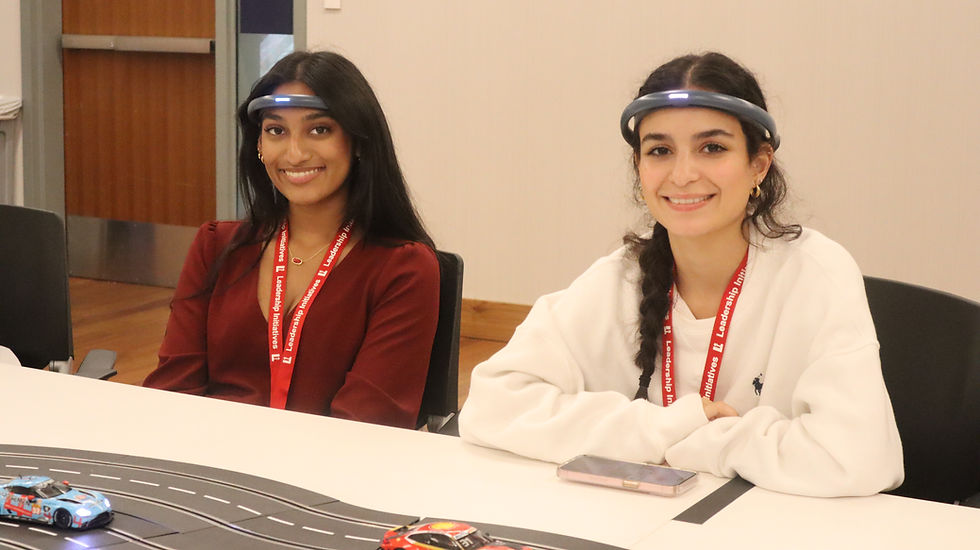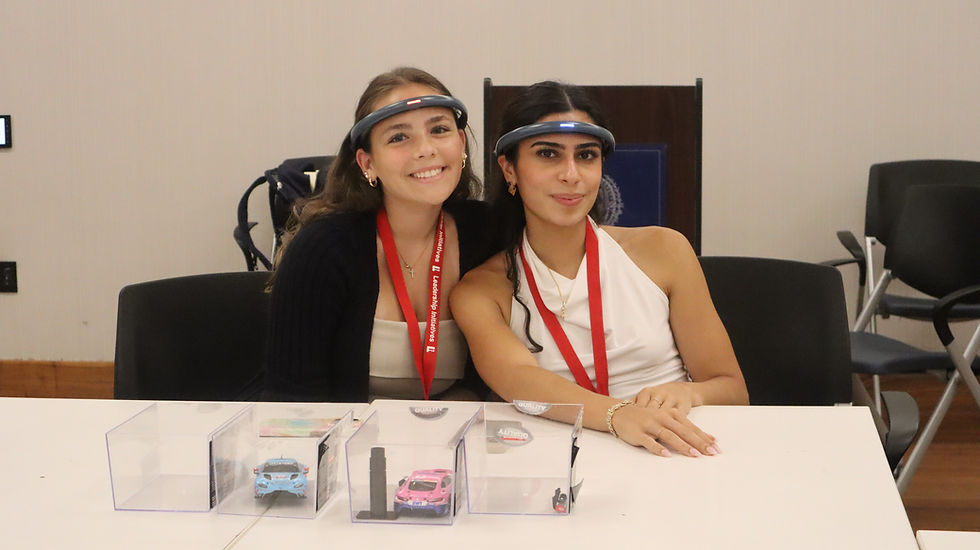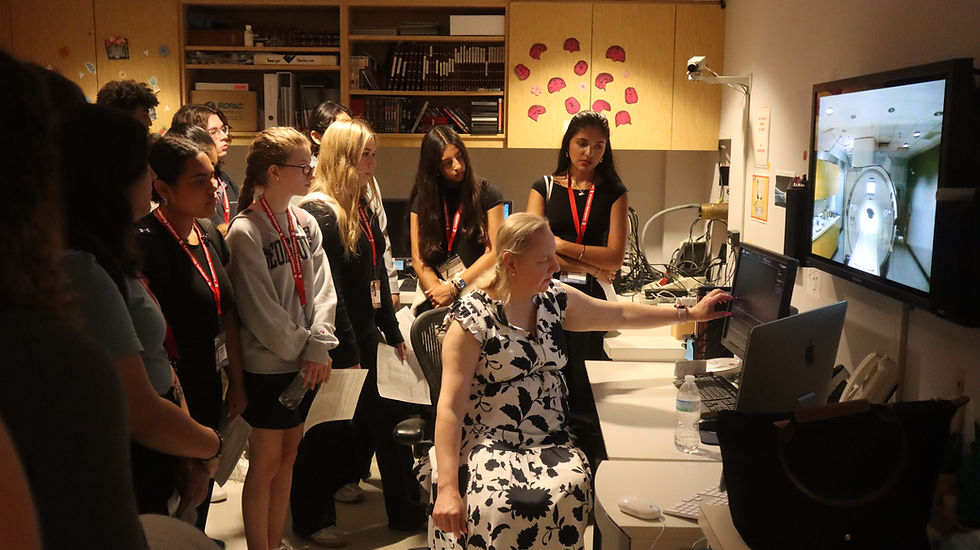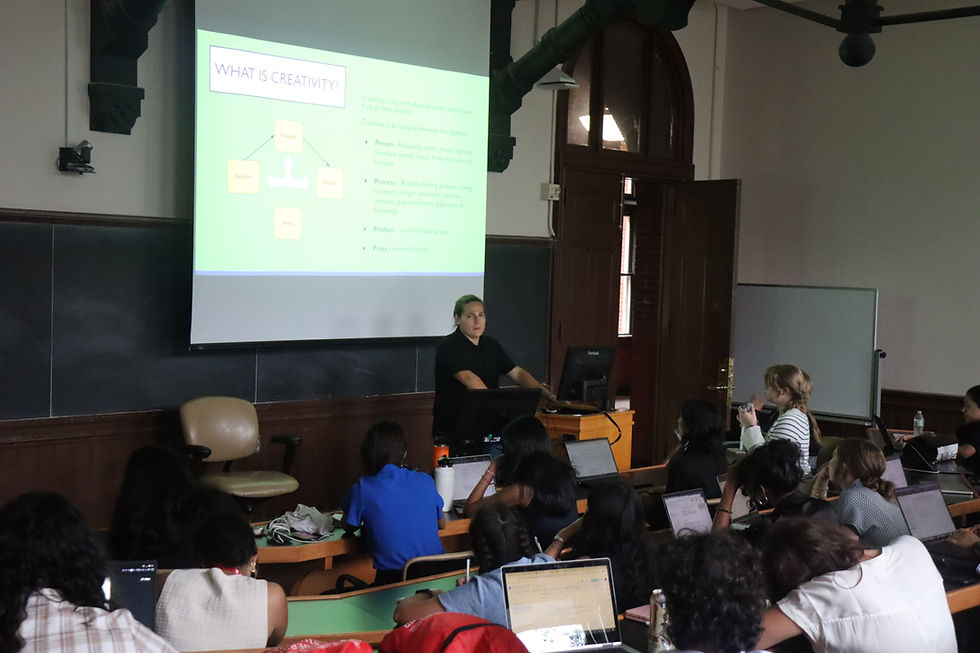Racing with the Mind: Neuroscience Interns Dive into Brain-Computer Interface Technology
- Marshall Bailly
- Jul 11
- 2 min read
On Wednesday, the Advanced Medical Neuroscience Internship offered students a hands-on experience that brought neuroscience to life in a completely unexpected way. Interns had the opportunity to work with the NeuroMaker NeuroRacing system, a brain-computer interface (BCI) activity that allows users to control the speed of a slot car using their own brainwaves. With EEG headbands securely placed, students participated in races where mental focus became the driving force. The concept is simple but powerful: the more a participant concentrates, the faster their car moves along the track. If focus wavers, the car slows down. This direct translation of thought into movement allowed interns to visualize how electrical activity in the brain can be captured and used to influence the external world.

Through this interactive session, students developed a deeper appreciation for how the motor cortex communicates with the rest of the body. While they were not physically moving to control the cars, their brains were actively sending signals that were picked up by the EEG headsets. These signals were processed and converted into instructions for the slot car system, demonstrating in real time how the brain initiates, modulates, and refines movement. Interns also gained insight into the specific roles of different types of brainwaves, such as alpha and beta waves, and how these patterns reflect levels of concentration, relaxation, or alertness. The technology offered them a tangible way to study the underlying mechanisms that govern voluntary motion, bridging the gap between textbook theory and real-world application.
Beyond learning about neural control of movement, the NeuroRacing experience also opened doors to conversations about neuroplasticity, attention regulation, and the future of neurorehabilitation. Interns reflected on how BCI technologies could be used to support patients with motor impairments or neurological disorders such as stroke, ALS, or spinal cord injury. They considered how similar systems could be integrated into therapeutic settings to help retrain the brain, enhance focus, or restore communication for individuals who have lost motor function.

What made the experience particularly meaningful was the way it encouraged students to think beyond the science and into the ethical and societal implications of brain-machine interaction. Interns posed thoughtful questions about the future of BCI technology, asking how it might reshape the lives of patients, improve quality of life, and even redefine what it means to control one’s environment. They also explored the potential risks, such as privacy concerns or the challenges of ensuring equitable access to such advanced tools. These discussions highlighted the importance of not only understanding the science but also recognizing the broader responsibilities that come with developing and applying neurological technologies.
In the end, NeuroRacing was more than just a fun competition. It was a learning experience that connected cognitive science, technology, and human empathy. By turning their own thoughts into a tool for action, interns stepped into the emerging world of neuroscience-driven innovation. The session left many students feeling inspired and motivated, with a renewed curiosity about how the brain works and a clearer vision of the many ways they might contribute to its study and application in the future.






Kommentare